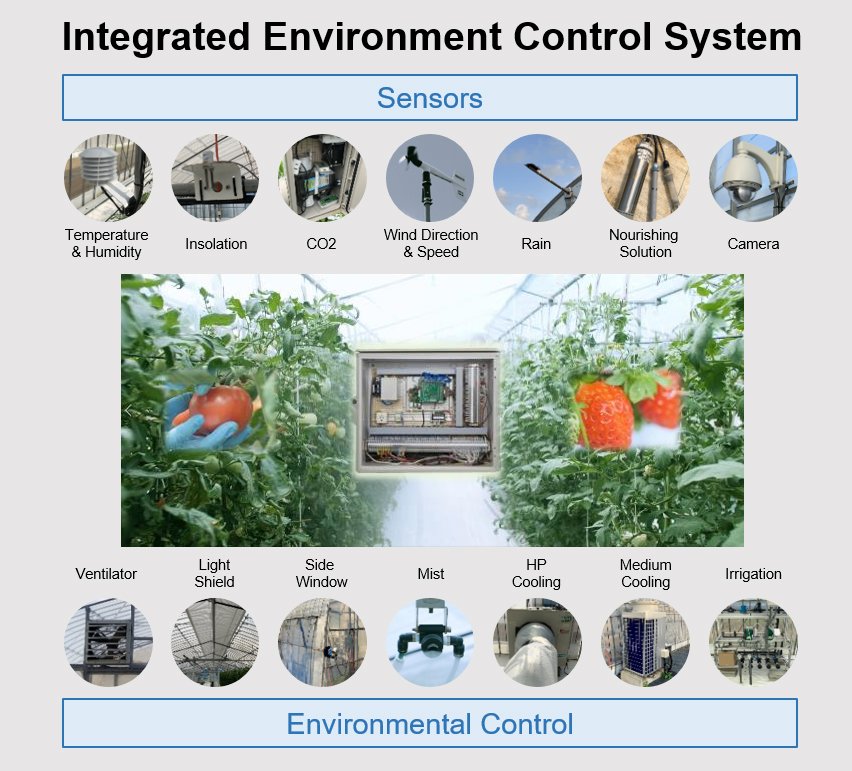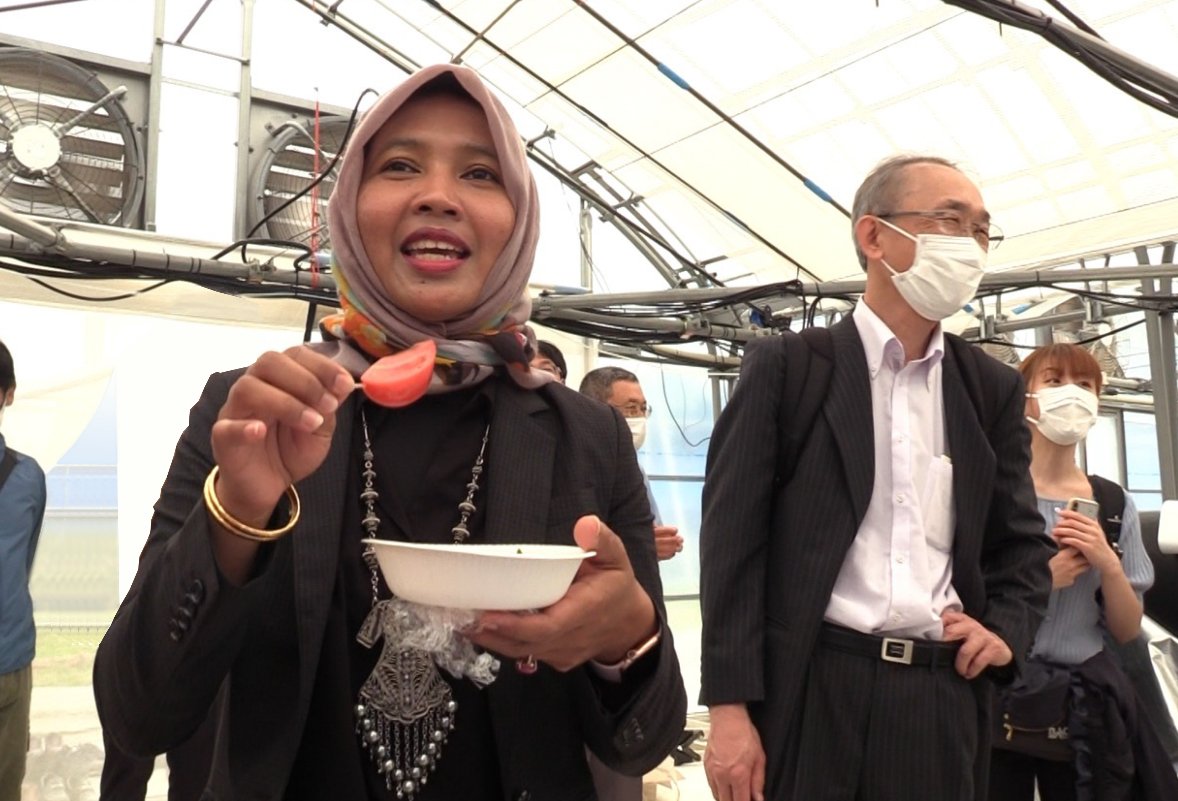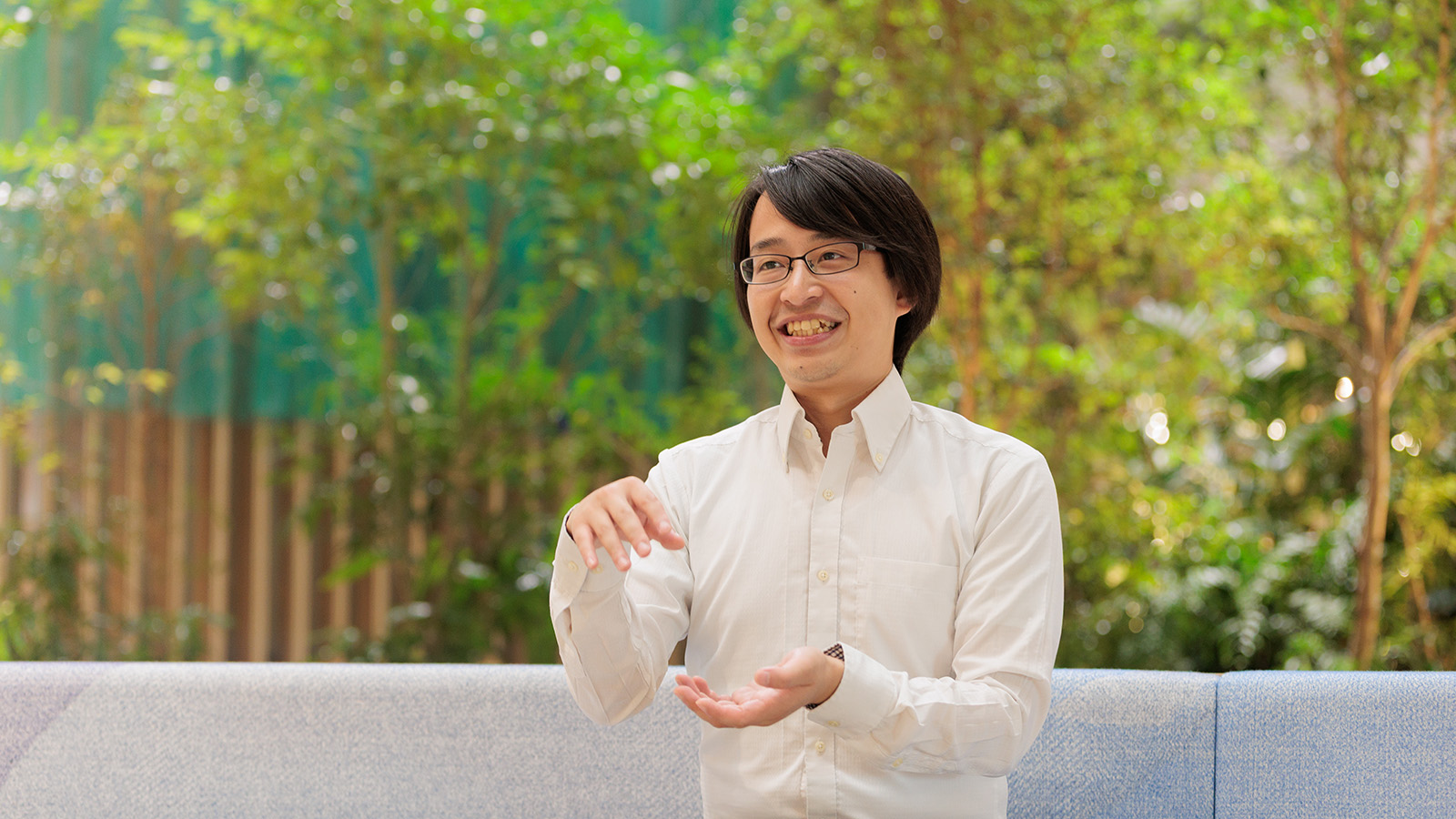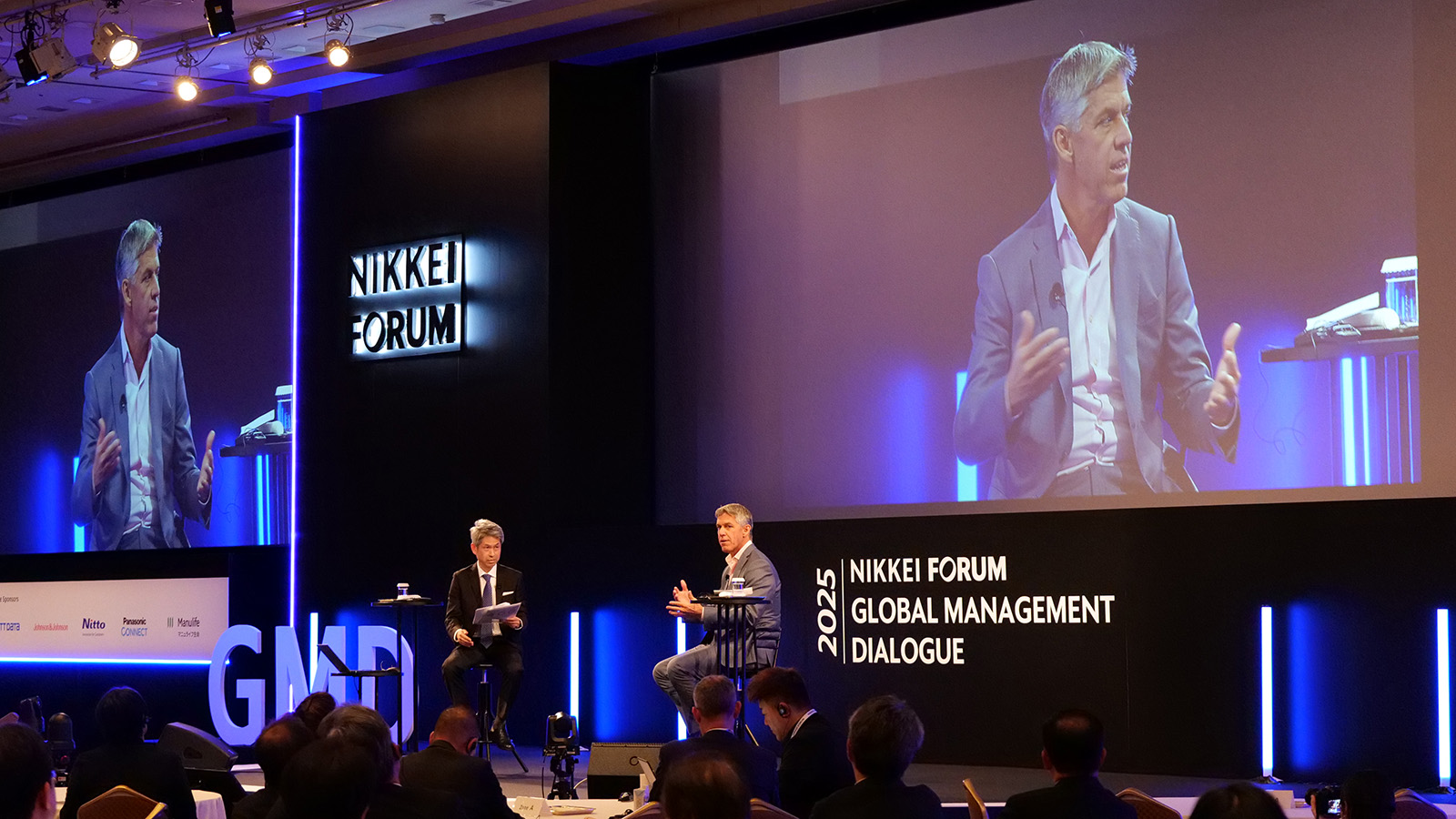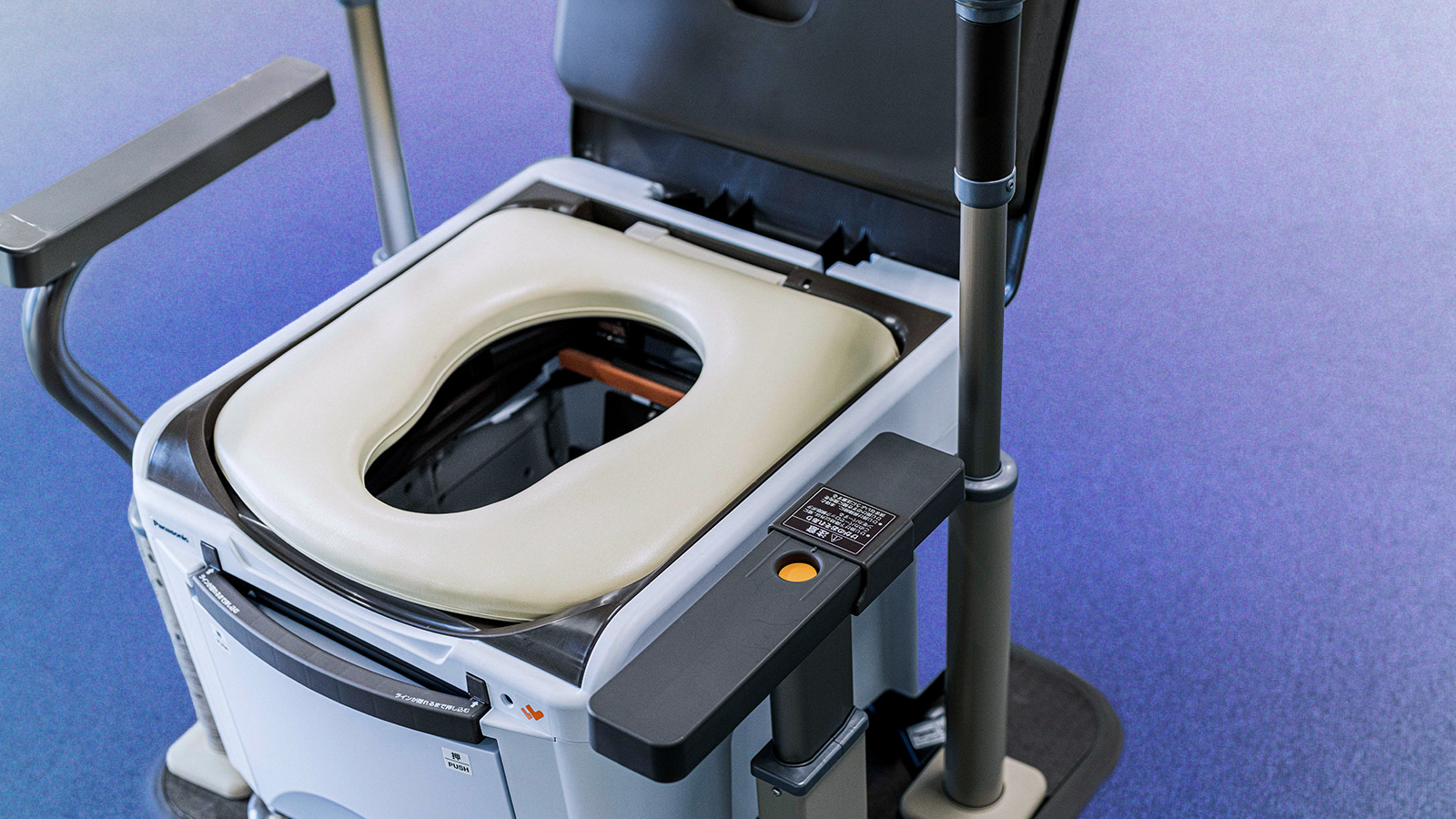
In order to grow quality vegetables at affordable prices even under extreme weather conditions, Panasonic played a key role in developing the first Asian Monsoon Plant Factory System.
The subtropical island of Ishigaki, situated south-west of the main island of Okinawa, is a popular tourist destination that is also hot and humid and prone to monsoons--all conditions which are unfavorable to growing vegetables and which prevent stable supply of an essential food source. The extreme weather events caused by monsoons result in changes in temperature and humidity and are experienced in many parts of Asia. Climate change is set to worsen extreme weather, causing an increase in severity and frequency. The Asian Monsoon Plant Factory System (PFS) Consortium, composed of the Japanese government, academia and companies from the private sector, was formed in 2016 to tackle the issue of sustainable farming in tropical areas. Its goal is to develop a PFS capable of producing a stable supply of safe, secure and delicious Japanese varieties of vegetables at affordable prices even in regions prone to extreme weather. Ishigaki Island was selected as the site of a proof of concept project because crop production there is frequently affected by monsoon squalls and devastating typhoons.
Technology enabling a first for a tomato plant factory
For the proof of concept of the first ever Asian Monsoon PFS model, tomatoes were among the vegetable chosen-- a challenge for the team given that tomatoes are susceptible to disease in Ishigaki's high humidity. This research was supported by grants from the Project of the Bio-oriented Technology Research Advancement Institution (R&D matching funds on the field for Knowledge Integration and innovation). The key elements of tomato farming are temperature, humidity and lighting. Panasonic joined other consortium partners in contributing the latest Japanese agricultural and industrial technologies to equip the plant factory-type intelligent greenhouse (named IT Greenhouse), making it possible for temperature and humidity to be controlled at optimal levels. Examples of the technology adopted include infrared-light absorbing curtains to mitigate heat, and moisture content sensors that could gauge the degree of photosynthesis in the tomatoes in a non-destructive and contactless way. To protect the plants from typhoons, the plant factory is based on a passive greenhouse structure that can withstand gusts of up to 50m per second (a typical typhoon has gusts of up to 32m per second).
Once the innovative technologies were installed and the optimal plant factory environment had been created, the next step was to introduce a system for managing and improving conditions within the facility. Making use of know-how gathered from its experience with IoT-enabled home appliances, Panasonic developed two sets of cloud management systems.
The first is Smart Saien's Cloud--an integrated environment control system notable for being the first of its kind in the world in which the control programs were optimized and implemented for use in a subtropical climate. This system uses Information and Communication Technology (ICT) to remotely control various equipment to manage PFS conditions, including temperature and humidity. The second is Panasonic's Cultivation Navi system, which farmers use to record and access cultivation/operational data via a smart phone app. The trial plant factory on Ishigaki Island was remotely controlled from 2000 kms away, from the Panasonic base in Osaka and the National Agriculture and Food Research Organization (NARO) in Tsukuba. In addition to giving farmers easy access to data such as vegetable growth and cultivation plan, the system allows specialists to give professional and data-driven advice to farmers to improve both quality and yield.
Many regions have strict quarantine regulations and eliminating the need to transport vegetables to the island means the PFS approach not only promotes local agriculture but also contributes to reducing the carbon footprint associated with imported produce. "Being able to remotely control many locations at the same time makes the system scalable", says Dr. Yukinori Matsumoto, an engineer at Panasonic's Innovation Strategy Office who led the project.
Overcoming the cost hurdle
A key goal of this project is to produce the vegetables at low cost--and cost competitiveness is often difficult to overcome when using the most advanced technologies. Here, however, the project excelled. Compared with the Dutch-style plant house--a global standard in tomato farming characterized by a tall structure that allows tomatoes to grow for 10 months--the construction cost at the prototype PFS is about three times lower: less than 200 million yen per hectare compared to 600-800 million yen per hectare for the Dutch structure. The difference is in the design. Given that the area is prone to natural disasters such as typhoons, the PSF project adopted a much shorter greenhouse where tomatoes are harvested every 3 months after growing to a height of about 2 meters. This structure requires neither concrete to stabilize the foundation nor steel to support the structure; taken together with custom-built technologies, the result was a great reduction in harvesting cost. Significantly, this cost is equivalent to that for producing tomatoes in the temperate zone on the main island of Japan. The PFS project has introduced a way of cultivating the same nutritious and tasty tomatoes in a region previously unable to sustain such a crop.
On March 26, 2021, this five-year Asian Monsoon PFS Consortium project culminated in a final presentation on Ishigaki Island and Dr. Sri Nuryanti, Agricultural Officer at the Embassy of the Republic of Indonesia in Tokyo, was invited as a guest. After tasting tomatoes freshly harvested at the site, she said, "I am really impressed by this technology; this is why I asked about the feasibility of investment and dissemination level of technology to the public. Plant factory-type intelligent greenhouses can solve many agriculture challenges and provides delicious results".Dedicated to creating a better life for people around the world, this project is part of Panasonic's commitment to develop solutions that address and resolve critical societal challenges.
# # #
Disclaimer:
We would like to note that Panasonic Newsroom is not a place to address personal Customer Service issues. Even though this is not the forum, Panasonic is always eager to resolve your concerns. Our local customer services contacts can be found at Global Support or you can see our list of Social Media Accounts to find the right channel for your queries and concerns.
Related Links
Related Videos
Growing Tomatoes in Humid Heat: Contribution to SDGs with the IT Greenhouse [Panasonic]

